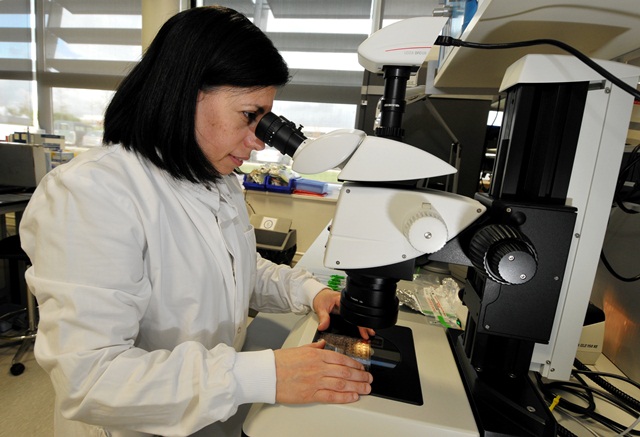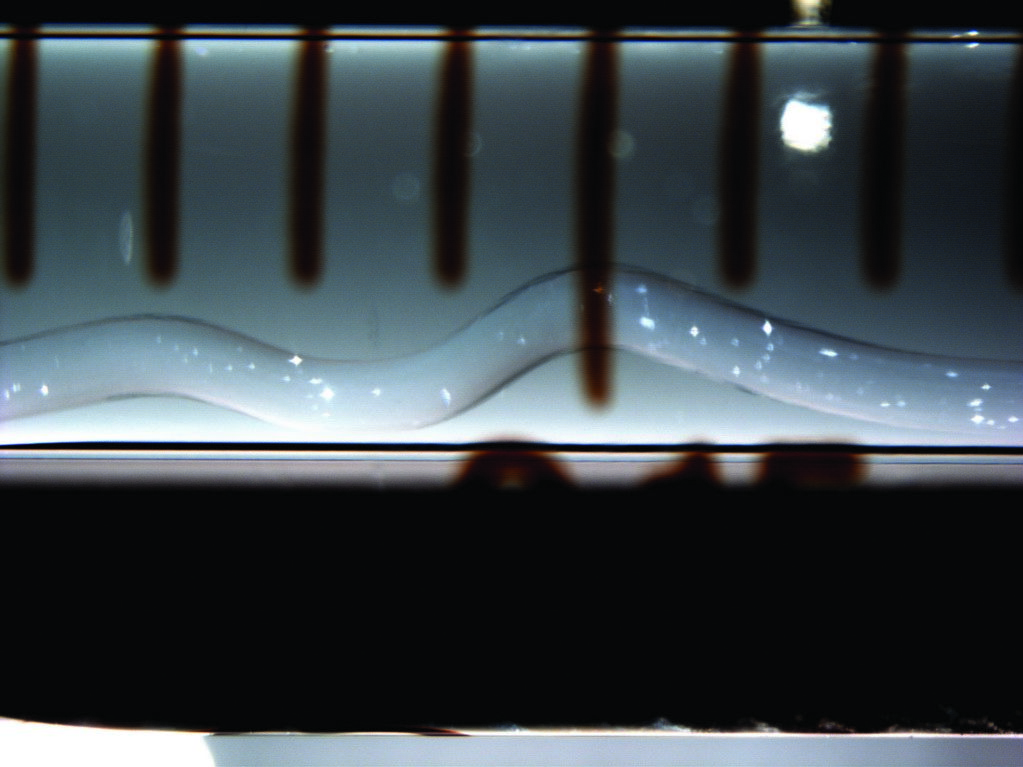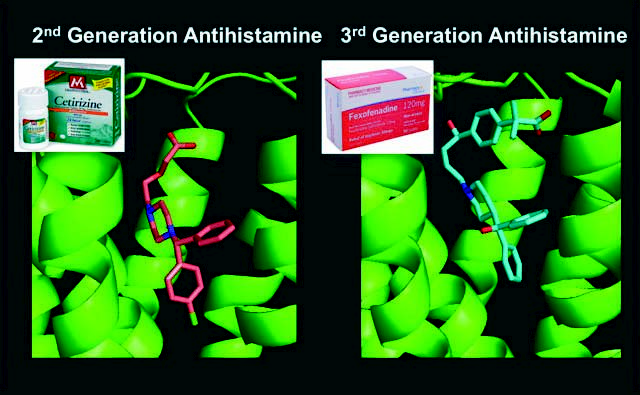Keep up to date with the latest research and developments from Diamond. Sign up for news on our scientific output, facility updates and plans for the future.
Officially opened in 2008, the Membrane Protein Laboratory (MPL) is a research and training facility for scientists interested in solving the 3D structures of membrane proteins by X-ray crystallography. Funded by the Wellcome Trust, the MPL is a joint venture between Diamond and Imperial College London.

Figure 1: Isabel de Moraes, MPL Coordinator and Group Leader responsible for the management, user projects and developments of the laboratory.
Membrane proteins are important pharmaceutical targets with 60% of the current marketed drugs targeting this class of proteins. However, a major challenge in designing drugs to target membrane proteins is the need for high resolution structural information. With the MPL situated just metres from Diamond’s Microfocus Macromolecular Crystallography (MX) beamline (I24), world-class expertise and tools are brought together to tackle this challenge. The use of Synchrotron Radiation Circular Dichroism (SRCD) through the Circular Dichroism beamline (B23) has also proven to be a valuable high throughput (HTP) screening tool to optimise detergents, ligands and protein batches prior to crystallisation. Furthermore, with the tremendous pace of technological innovation within structural biology, and the co-location of the UK-XFEL hub and the UK National Bio-Imaging Centre (eBIC) at Diamond, the MPL is establishing CryoEM and SFX as viable routes for Diamond-MPL users. The MPL engagement with these methods will definitely have a positive impact on membrane protein structural research.

Figure 2: Membrane protein crystal samples prepared for transit to the LCLS.

Since 2011, the MPL has been running a hands-on training workshop each year on various aspects of the processes involved such as how to produce a protein, crystallise it and get the best out of it using the Diamond beamlines. Most recently the MPL held a symposium in collaboration with the Industrial Liaison team at Diamond on Membrane Protein Structure Determination for industrial scientists. The event brought together structural biologists and biochemists from a wide selection of pharmaceutical companies, and covered recent approaches devised to address the major challenges related to the expression, extraction, purification and crystallisation of membrane proteins. It also focused on the latest developments in X-ray crystallography experiments at Diamond to obtain structural information from these tiny, extremely fragile, but very important, crystals.
References
1.A. Heifetz, G.F.X. Schertler, R. Seifert, C.G. Tate, P.M. Sexton, V.V. Gurevich, D. Fourmy, V. Cherezov, F. H. Marshall, R.I. Storer, I. Moraes, I.G. Tikhonova, C.S. Tautermann, P. Hunt, T. Ceska, S. Hodgson, M.J. Bodkin, S. Singh, R.J. Law and P. C. Biggin. GPCR Structure, Function, Drug Discovery and Crystallography: Report from Academia-Industry International Conference (UK Royal Society) Chicheley Hall, 1-2 September 2014. Naunyn-Schmiedeberg’s Archives of Pharmacology 2015.
Diamond Light Source is the UK's national synchrotron science facility, located at the Harwell Science and Innovation Campus in Oxfordshire.
Copyright © 2022 Diamond Light Source
Diamond Light Source Ltd
Diamond House
Harwell Science & Innovation Campus
Didcot
Oxfordshire
OX11 0DE
Diamond Light Source® and the Diamond logo are registered trademarks of Diamond Light Source Ltd
Registered in England and Wales at Diamond House, Harwell Science and Innovation Campus, Didcot, Oxfordshire, OX11 0DE, United Kingdom. Company number: 4375679. VAT number: 287 461 957. Economic Operators Registration and Identification (EORI) number: GB287461957003.